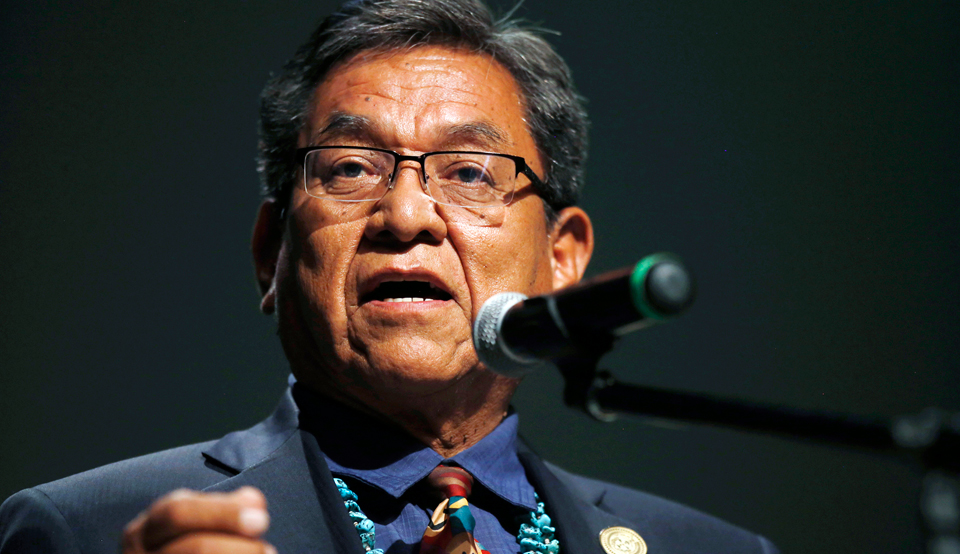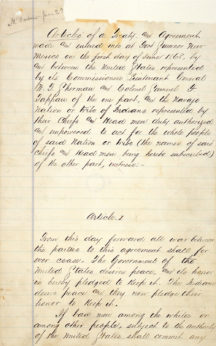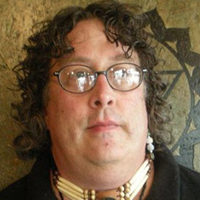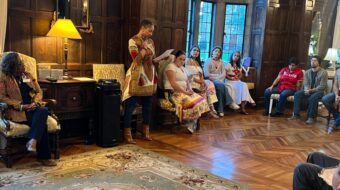
PADEN, Okla.—“Stop giving federal rights to the states that were formed after our Treaty of 1868,” says President Russell Begaye, Navajo Nation. “If you are moving forward with this reorganization, tribes must be involved.”
Begaye was speaking of the Bureau of Indian Affairs‘ attempt to realign 13 regions in response to Pres. Trump’s executive order demanding a massive overhaul of the federal bureaucracy. This means the BIA might be reorganized under unified boundaries with other federal agencies, such as the Bureau of Reclamation or Bureau of Land Management.
The Interior Department’s initial proposal was drafted under some pushback from state governors. It clearly breaks the Navajo nation into two regions and combines Navajo communities among other tribes and pueblos in these regions.
Tribal leaders spoke up against the BIA for moving forward with this proposal. They vehemently condemn the plan as it favors states over tribal nations.
This happens on the heels of the Navajo nation commemorating the 150th anniversary of the Treaty of 1868. This treaty has been called the “Old Paper” or Naal Tsoos Sani in Dine Bizaad, the Navajo language.
President Begaye says, “It’s not just a historical relic. It’s a living document,” adding, “it’s a contractual agreement with the U.S. government and the Navajo nation.”
The Navajo protected their land mass against Mexican and New Mexican slave traders and livestock raiders. Once the U.S. Army arrived, between 1863 and 1866 they marched over 11,000 Dine people over 400 miles. They settled on a desolate reservation at Bosque Redondo in New Mexico. The Navajo is the only Indigenous nation to use a treaty to escape removal and return home.
The signing of the treaty is celebrated every year on June 1.
University of New Mexico associate professor Jennifer Nez Denetdale says the fabric of the Dine is woven within the stories of the Longest Walk. She has collected many oral histories, including from those who say women were key to convincing both their tribal leaders and General William T. Sherman to allow the return to the homeland.
She spoke to the Smithsonian and said, “By honoring the treaty we also remember the struggles of our ancestors and we honor them for their persistence and their perseverance. They had a lot of courage.”
The United Nations has always upheld the honoring and protection of sovereign rights with treaties. In 2013, Navi Pillay, the UN High Commissioner for Human Rights, issued a statement for International Day of the World’s Indigenous Peoples.

“Even when signed or otherwise agreed more than a century ago, many treaties remain the cornerstone for the protection of the identity, land, and customs of Indigenous Peoples, determining the relationship they have with the state. They are thus of major significance to human rights today,” she said.
Indian Country Today reports, “The spiritual aspect of treaty-making escaped the United States government, history tells us. The U.S. federal government entered into more than 500 treaties with Indian nations from 1778 to 1871; every one of them was ‘broken, changed or nullified when it served the government’s interests,’” Helen Oliff wrote in Treaties Made, Treaties Broken.
Many tribal nations and the Longest Walk for Treaties by the American Indian Movement in the 1970s and still today push for Indigenous education on the intrinsic value of treaties. One main reason is that the original treaties recognized the Indigenous nations as sovereign and separate from the United States. Basically, “the US agrees that tribes are legitimate nations that exist independently of the US government and are capable of entering into agreements and running their internal affairs without US government intervention.”
The fight continues, including for some of the northern Ojibwe bands in Minnesota to protect hunting and the water protectors.
Senator Bernie Sanders said, “Time and time again, our Native American brothers and sisters have seen the federal government break solemn promises, and huge corporations put profits ahead of the sovereign rights of Native communities. I will stand with Native Americans in the struggle to protect their treaty and sovereign rights.”
John Kane of Let’s Talk Native, was talking of sovereignty and identity recently. He stated it’s not that we merely exist as an American of Native descent. But rather a Native who lives in America. The emphasis of identity is that of being Indigenous not as an American.
“Tribal Nations are governments,” President Russell Begaye said. “We are political entities. We are not a race in the eyes of the federal government nor have we been throughout history.”
One has to look no further than Donald Trump to see the concern. His administration recently claimed that tribes are a “race” and not a sovereign nation. History might just slap Trump in the face.










